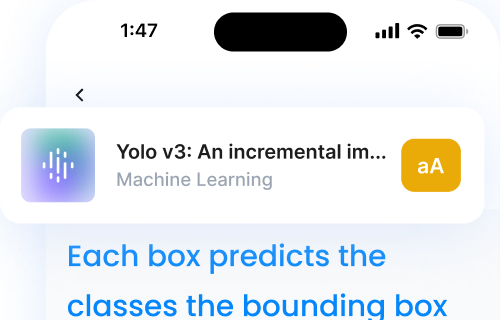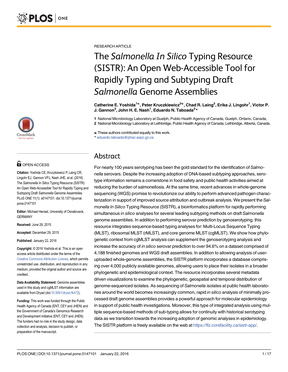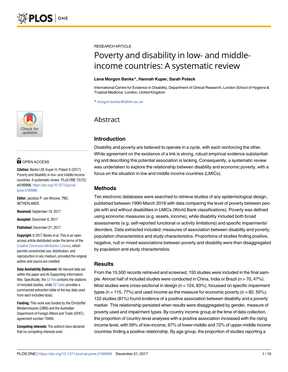
Converting a research paper into an audio paper may help PhD students and researchers who are often overwhelmed by the sheer volume of academic papers they need to read. Between coursework, research responsibilities, and writing projects, finding the time and energy to stay on top of scholarly literature can be a challenge.
Heavy reading loads, eye strain, and time constraints make it difficult to absorb and retain complex information efficiently. Traditional reading methods often require intense focus, limiting the ability to multitask and leading to fatigue over time.
Whether you’re trying to power through a literature review, absorb experimental findings, or prepare for a research presentation, audio papers help optimize your workflow, reduce reading fatigue, and improve comprehension. With the right TTS tool, PhD students can transform how they consume academic content—making research more manageable, flexible, and accessible.
Key Takeaways
- Multitask with Ease – Listen to research papers while commuting, exercising, or handling daily tasks.
- Reduce Eye Strain and Fatigue – Convert dense academic texts into an audio format to minimize screen time.
- Improve Accessibility – Ideal for students with dyslexia, visual impairments, or those who prefer auditory learning.
- Customize Listening Experience – Adjust playback speed, skip citations, and use note-taking tools to retain key insights.
- Enhance Comprehension and Retention – Pair listening with text highlighting to reinforce complex concepts.
- Stay Productive on the Go – Turn passive time into valuable research hours by integrating TTS tools into your workflow.
Audio Papers Make Academic Reading Easier
Audio papers, powered by text-to-speech (TTS) technology, offer a game-changing solution by converting dense academic texts into listenable formats. Instead of being confined to a screen, researchers can listen to research papers on the go, review key sections hands-free, and reduce eye strain.
This allows them to stay engaged with their field without sacrificing productivity or mental energy. Features like customizable playback speed, automatic citation skipping, and note-taking tools ensure that users can tailor their listening experience to match their learning preferences.
Multitasking becomes easier with audio-based academic reading, as students can listen to journal articles while commuting, exercising, or completing household tasks. Additionally, TTS tools improve accessibility, making research papers more inclusive for students with dyslexia, visual impairments, or attention difficulties.
Choosing Text-to-Speech Tools for Audio Papers
When picking a text-to-speech (TTS) tool for academic purposes, it’s important to focus on features that align with your needs. Things like realistic voice options, speed adjustments, and note-taking tools can make a big difference.
Choose tools based on your needs, budget, and features like natural voices, speed control, and note-taking options. Start saving time and improving your research workflow today.
Key Features to Look For
Here are some features to prioritize when evaluating TTS tools:
- Realistic voices: Helps reduce listener fatigue during long sessions.
- Speed control: Adjust playback speed based on the complexity of the material.
- Content skipping: Automatically skips over citations and references for smoother listening.
- Annotation tools: Allows you to take research notes directly within the tool.
Comparing Popular TTS Tools
Here’s a quick comparison of well-known TTS tools based on their standout features:
| Feature | Natural Reader | LISTENING |
|---|---|---|
| Voice Quality | Good AI voices | AI-powered human-like |
| Citation Handling | AI skipping | Automatic skip |
| Speed Range | Adjustable | 0.5x to 4x |
| Language Support | 50+ languages | Multiple |
| Note-taking | Yes | One-click capture |
| Base Price | $9.99/month | $12.99/month |
Natural Reader stands out for its extensive language support and AI-driven filtering, while LISTENING is tailored for academic use with features like automatic citation skipping and note-taking.
Audio Settings for Academic Audio Papers
The best audio settings depend on how complex the material is and your personal preferences.
Speed and Voice Options
For academic content that’s more detailed or complex, aim for a playback speed of 140–180 words per minute. This slower pace helps you better absorb the information. Using high-quality, natural-sounding voices can also improve understanding. Platforms like Listening offer voices that stay clear, even at faster speeds.
Technical Content Settings
If your content includes equations or technical terms, enable MathJax for accurate equation rendering and use SSML tags for better pronunciation and formatting.
For mathematical sections, consider lowering the playback speed for clarity. SSML tags can also help with technical terms:
- Use the
<phoneme>tag for correct pronunciation of scientific terms and jargon. - Apply the
<sub>tag to simplify how citations are read aloud. For instance, “(Smith et al., 2023)” can be adjusted to “Smith and colleagues”.
“The text is often too dense for me and my eyes skip words, making it difficult to understand what I just read. With the app, I can slow down the speed of speech and listen while my visual brain generates images (much easier for me to do than with reading).” – Bell Jelly
To stay focused and retain more, enable synchronized text highlighting while listening.
Adjusting these settings can make handling technical or specialized content much easier. It also helps integrate text-to-speech tools into your research process smoothly.
Research Workflow Integration
Incorporate audio papers into your research process by setting up a clear file system, combining note-taking techniques, and using both audio and visual reading methods.
File Management System
Keep your audio papers organized with a structured file system. Use a consistent naming format that includes a three-letter prefix, document title, version number, and date in YYYYMMDD format.
Set up folders for different categories, projects, or research topics. Each folder should include a README file with details like paper titles, authors, key findings, recommended audio settings, and technical notes. This approach ensures quick access and smoother note-taking.
Audio Note-Taking Methods
Combine manual and digital tools for effective note-taking. Tools like Glean let you create annotated visual blocks for quick reference .
When taking notes from audio papers:
- Mark sections that require further visual review.
- Use consistent abbreviations for technical terms.
- Add timestamps to highlight key findings.
- Include source citations to deepen your understanding .
These detailed notes, paired with an organized file system, enhance your ability to analyze and retain information.
Combined Reading Approach
Mix audio and visual reading to boost comprehension. Try the “Three Close Reads” method :
- First Pass: Audio Overview
Listen at 1.5x speed while skimming the paper’s abstract, headings, and conclusions. - Second Pass: Deep Comprehension
Focus on methods and results while listening at normal speed. Follow along with the text for better understanding. - Third Pass: Critical Analysis
Alternate between audio and visual reading for complex sections. Use tools like Speechify’s text highlighting feature to reinforce key points .
For technical audio papers:
- Listen to the introduction and background sections during commutes.
- Save visual reading for equations and figures.
- Use synchronized text highlighting for methodology sections.
- Record voice notes to capture insights for later review.
Research suggests that listening comprehension covers about 20% of what’s achieved through traditional reading , making it a helpful addition to your study methods.
Audio Paper Success Tips
When it comes to making the most of audio papers, a few key strategies can help you stay focused, cut down on distractions, and better understand the material. Here’s how you can refine your approach to research reading using audio papers.
Focus Techniques
Staying engaged while listening is crucial for understanding. Tools like Listening let you focus on specific sections and take notes with just one click, making it easier to grasp complex ideas. For more technical content, adjusting the playback speed can help – slower speeds for dense material, faster for simpler sections.
Managing Distractions
Your environment plays a big role in how well you absorb information. Tailor your listening conditions based on the type of content:
| Content Type | Recommended Environment | Expected Outcome |
|---|---|---|
| Complex Papers | Any environment | Better focus and higher retention |
| Basic Papers | Quiet space | Easier to process information |
| Technical Content | Minimal background noise | Improved understanding of details |
While some people with strong working memory might not be as affected by background noise, most PhD students find that a quieter environment helps them stay on track with academic material.
Reviewing Content Effectively
Once you’ve set up a good listening environment, use these methods to reinforce what you’ve learned:
- Self-Assessment Checkpoints: Add checkpoints to test your understanding and highlight key sections using Listening’s note-taking feature for a more thorough review .
- Multi-Modal Review: Combine text-to-speech tools with reading the text. For example, Audemic Scholar offers synchronized text highlighting, which can help you retain information better .
- Revisit Difficult Sections: Go back to sections you found tricky during the first listen. Tools like Speechify’s OCR scanning feature make it easy to locate and review specific parts .
These strategies can help you get the most out of your audio papers while keeping your research process smooth and efficient.
Conclusion: Time-Saving Research Methods with Audio Papers
Audio papers simplify the research process for PhD students by turning reading into a quicker, more adaptable activity. Tools like Audemic Scholar help users grasp content better through features such as synchronized text highlighting, even during multitasking, while also cutting down on screen fatigue .
Today’s TTS tools cater to academic needs with advanced features designed to save time:
| Feature | Benefit |
|---|---|
| Smart Citation Skipping | Avoids citation markers and references for smoother listening |
| Section-Based Navigation | Lets you focus on specific parts of a paper |
| Variable Speed Control | Speeds up familiar sections for quicker understanding |
| Automated Note Capture | Simplifies note-taking during listening |
These tools have gained traction among academics, with over 50,000 students and researchers now integrating them into their study routines . As Audemic puts it:
“It will allow you to read and understand papers in much less time, especially for getting to grips with some of the knottier papers” .
This shift in research methods highlights the growing role of audio papers in managing heavy reading demands. They offer a practical way to balance academic workloads, maintain quality, and avoid burnout.
FAQ
How Can PhD Students Benefit from Audio Papers?
PhD students often face overwhelming reading loads, time constraints, and eye strain. Using audio papers, powered by text-to-speech (TTS) technology, provides an efficient way to engage with academic content while multitasking. By listening instead of reading, researchers can improve retention, reduce screen fatigue, and absorb key insights more effectively.
What is Section-Based Listening, and Why is it Useful?
Section-based listening allows users to skip directly to relevant parts of a research paper, such as the abstract, methodology, or results, without having to go through the entire document. This approach saves time, enhances comprehension, and helps researchers focus on key insights, making complex content more manageable. It is particularly beneficial for students who want to prioritize the most important sections of a paper without unnecessary distractions.
What Features Should I Look for in a TTS Tool for Research?
Choosing the right TTS tool for academic reading is crucial. The best tools offer high-quality AI voices, adjustable playback speed, automatic citation skipping, and note-taking capabilities. These features ensure a smoother listening experience, allowing researchers to focus on the core ideas rather than getting bogged down by references and formatting issues.
Listening App is among the most popular TTS tools, offering unique benefits like realistic AI-powered voices, section navigation, and multi-file format support.
How Do I Format Research Papers for Better Audio Compatibility?
Properly formatting research papers ensures a seamless listening experience with TTS tools. To improve playback accuracy, it’s important to:
- Use clear section headers to allow for easier navigation.
- Remove unnecessary symbols, watermarks, and formatting errors that might interfere with TTS conversion.
- Keep PDF files under 500KB to ensure smooth mobile playback.
For technical papers, SSML tags can help with pronunciation adjustments, and slowing down playback speed can improve clarity when listening to complex sections.
What’s the Best Way to Take Notes While Listening to Research Papers?
Taking notes while listening to research is essential for retaining key information and improving comprehension. Many TTS tools, such as The Listening App, offer one-click note-taking features to help capture important insights in real time.
Traditional methods like the Cornell note-taking system can also be useful, allowing users to organize main points, key takeaways, and follow-up questions. Adding timestamps to notes can make it easier to revisit critical sections later, improving study efficiency.
How Can I Integrate Audio Papers into My Research Workflow?
Integrating audio papers into your research routine can streamline your workflow and improve productivity. Setting up a structured file system with organized folders for different research topics allows for quick access to stored audio files.
Combining listening with visual reading can reinforce comprehension, particularly for dense or highly technical content. Additionally, using speed adjustments, citation skipping, and personalized playback settings can help create a smoother research process tailored to individual learning styles.
How Does Listening to Audio Papers Compare to Traditional Reading?
Listening to research papers complements traditional reading by offering a more flexible and efficient way to absorb information. While reading allows for deep focus, listening enables multitasking, making it possible to engage with academic content while commuting, exercising, or handling other tasks.
Listening combined with synchronized text highlighting can improve comprehension, especially for complex topics. Using a combination of both methods enhances retention and ensures a well-rounded approach to academic research.
How Can I Maximize Focus While Listening to Audio Papers?
To stay engaged while listening to audio papers, it’s essential to optimize your listening environment and playback settings. Adjusting playback speed based on content complexity can make a big difference—slower speeds for technical sections and faster speeds for general overviews. Minimizing distractions, using synchronized text highlighting, and pausing to take notes can also help improve focus and understanding.









